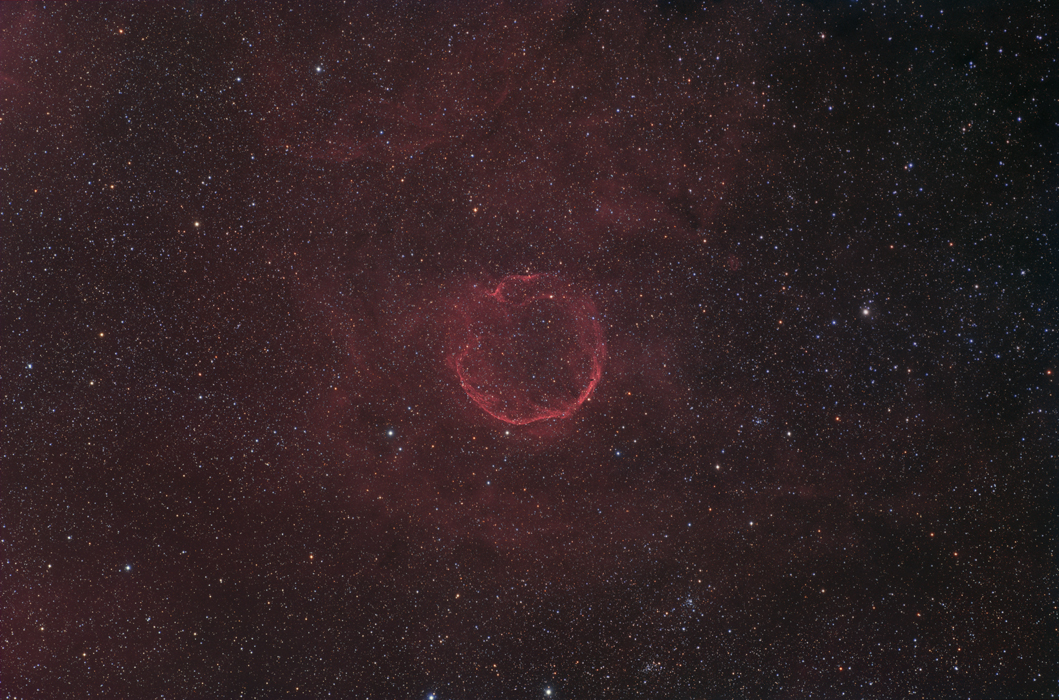Supernova Remnant CTB1 (G116.9+0.2)
Characteristics:
FOV: 2.6 x 3.9 degrees
RA (J2000): 23h 59m 19s
Dec (J2000): +62 degrees 26' 05"
Position Angle: +16 degrees
Description:
This modest looking target is perhaps one of my favorite astroimages
due to its delicate nature, its rarity, and the rich field of colorful
stars. CTB1 is an old supernova remnant similar in its shell-like
structure to the Cygnus
Loop. The filamentous edges are created by an expanding
shockwave resulting from a supernova explosion, which slams into
surrounding dust in the interstellar medium, ionizing gases such as
hydrogen, oxygen, and sulfur, which emit specific wavelengths of
radiation during electron recapture. CTB1 has been extensively
studied in both optical and radio wavelengths, with similarities and
differences to the Cygnus Loop described in this
article. Unlike the Cygnus Loop, the majority of CTB1's
optical light emission is in the HII spectrum, with only a small
component of OIII emission. Another difference between the two
SNRs is that CTB1 is very, very faint compared to the Cygnus Loop, with
this image requiring 6 hours of Ha exposure in order to obtain
sufficient detail. The expanding border of CTB1 appears
discontinuous, with a "break" at approximately 11 o'clock in the above
image, giving the illusion that it is emptying its contents into
surrounding space. The region is full of colorful stars of the
Milky Way, as well as numerous star clusters as labeled in this image.
Although
it is a beautiful widefield target, it is surprising that this region
is not often imaged by amateur astrophotographers, perhaps due to its
faintness. Given the delicate nature of this object and its faint
magnitude, I purposefully avoided "overprocessing" this image.
Feel free to explore the larger sizes of this image (links above),
which show a nice amount of filamentous detail in the shockwave front
of this SNR.
Photographic Details:
Date: Ha- September 19, 2008; RGB- September 23, 2008
Scope: Takahashi
FSQ106 at f5 on the Takahashi NJP
Mount
Autoguider: SBIG ST-402 with
60mm guidescope, focal length 227mm
Camera: STL11K -20C
Filters: Baader RGB
filter set; Baader 7nm
Ha filter, all 50.8mm
unmounted
Exposures: Ha 360'; R 60'; G 60'; B 90'. Total
exposure 9.5 hours
Post-processing:
Calibrated, aligned, and Sigma Clip combined
in Maxim, followed
by DDP
in ImagesPlus (IP). Further processing in Photoshop CS (16
bit format)
Please
note: Graphics on this website may not be reproduced without
author permission.
Back to Nebulae
Home
